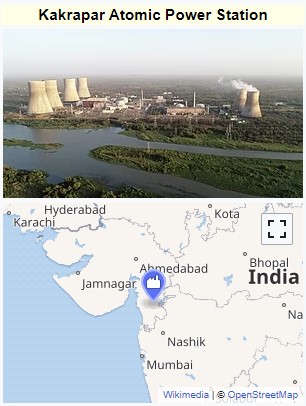Focus: GS-III Industry and Infrastructure, Science and Technology
Why in news?
Indigenously designed 700 MWe Kakrapar Atomic Power Plant-3 in Gujarat achieved criticality
Kakrapar Atomic Power Station
- Kakrapar Atomic Power Station is a nuclear power station in India, which lies in the proximity of the city of Vyara in the state of Gujarat.
- KAPS-1 went critical on 1992 and KAPS-2 went critical on 1995.
- The first two units at Kakrapar of 220 MWe (Megawatt electric) each were based on Canadian technology.
- The KAPS-3 unit, however, is Fully Indigenous.
- The third reactor at Kakrapar is the front runner in a series of 16 indigenous 700 MWe PHWRs which are under various stages of development.
- Nuclear Power Corporation of India Limited (NPCIL) has seven more reactors under construction which includes a fourth unit of 700 MWe at Kakrapar.

What does “Criticality” mean?
The normal operating condition of a reactor, in which nuclear fuel sustains a fission chain reaction. A reactor achieves criticality (and is said to be critical) when each fission event releases a sufficient number of neutrons to sustain an ongoing series of reactions.



